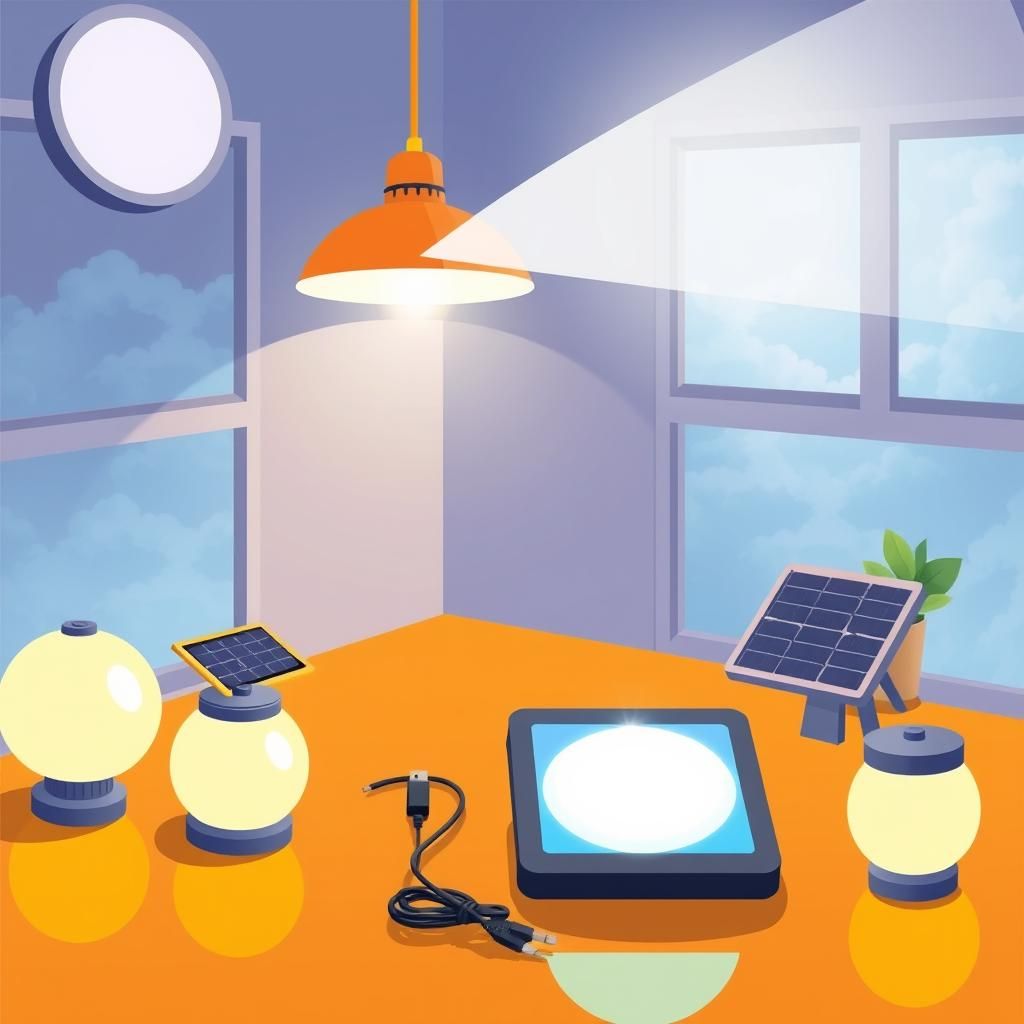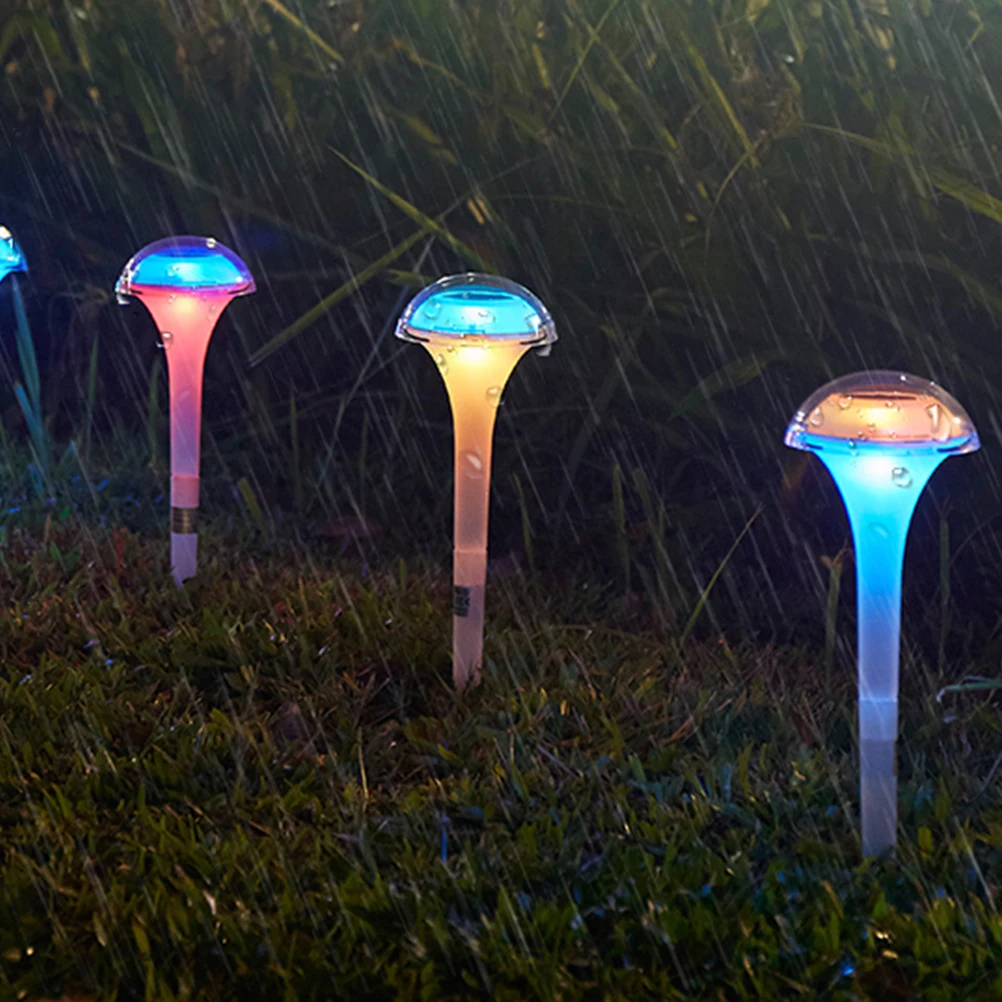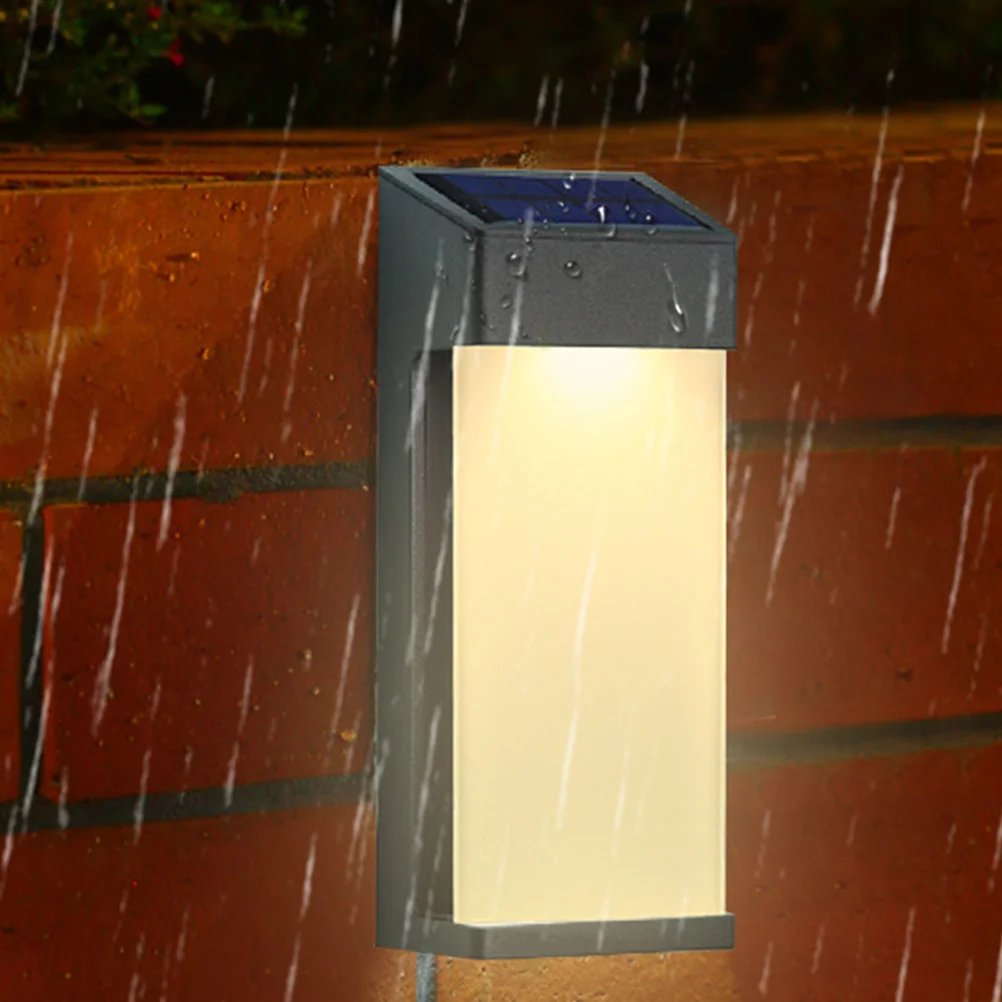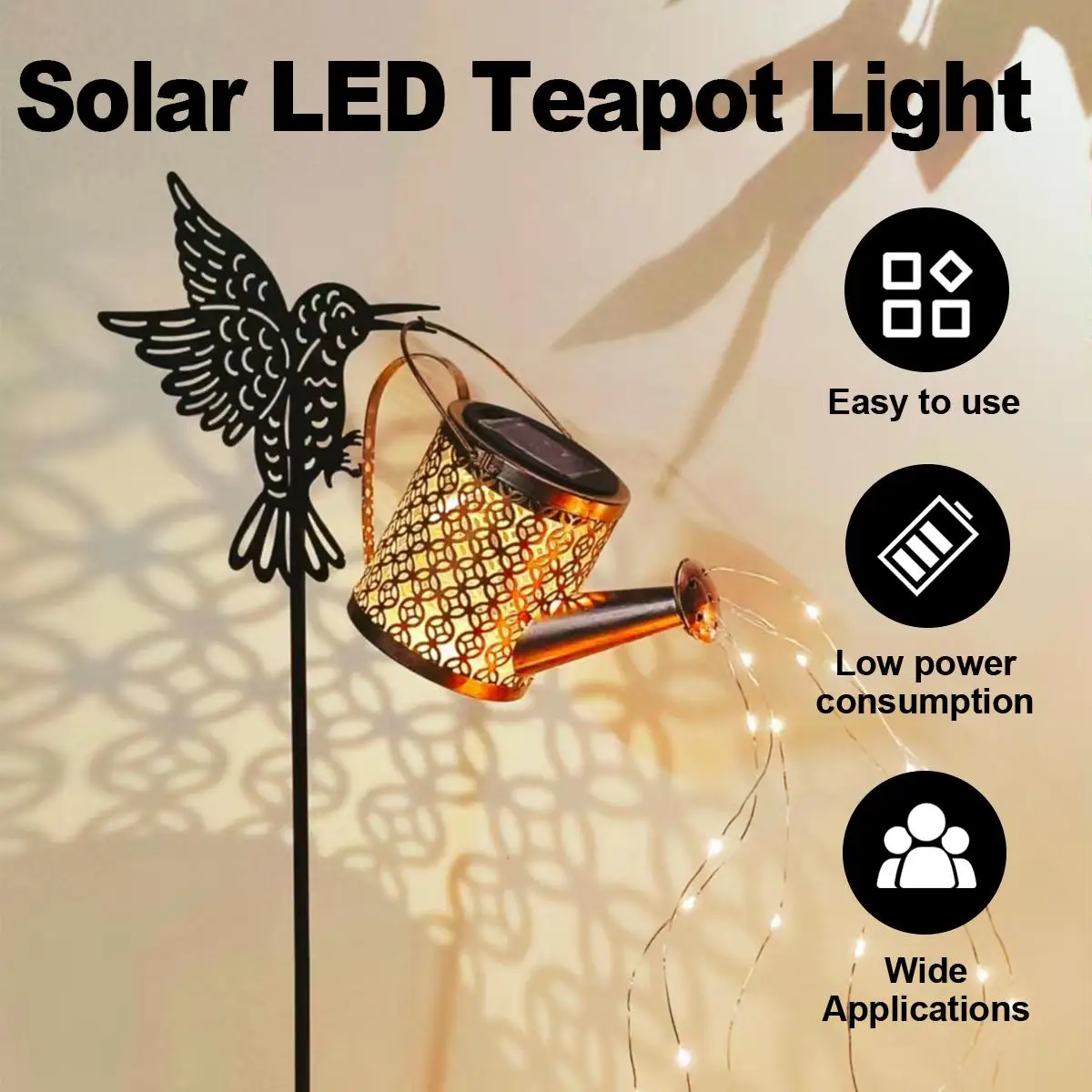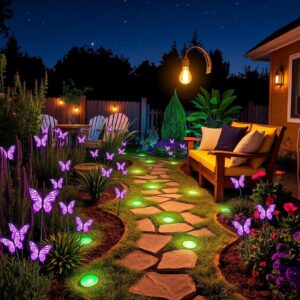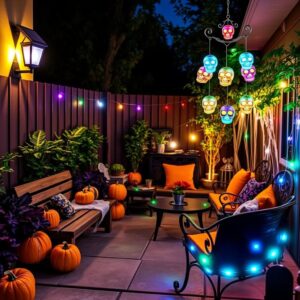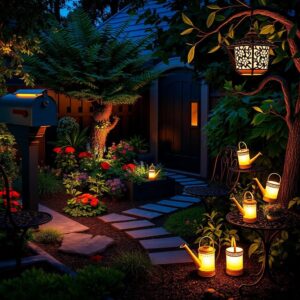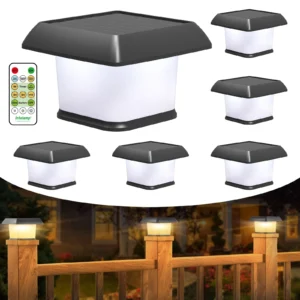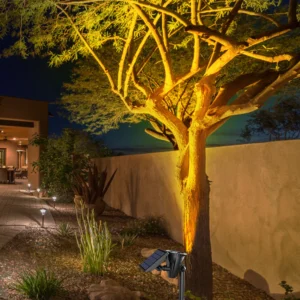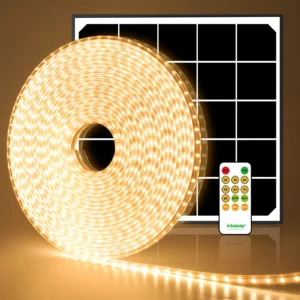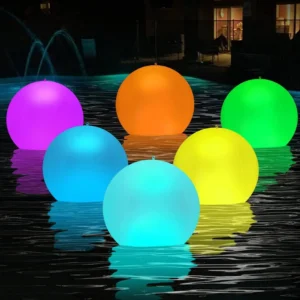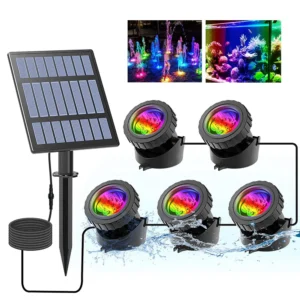96 LED Solar Willow Vine Light for Outdoor Decor
Introduction
Imagine standing in your backyard as dusk settles, waiting for your solar lights to flicker on—only to realize the day was cloudy, or maybe your lights have been under a shady patio all afternoon. Ever wondered what really makes those solar garden lights tick, or why they seem to love basking in the sun like a lazy cat? Let’s set the scene and shed a little light on how solar lights work, and why direct sunlight matters so much.
Why Solar Lights Need Sunlight
Solar lights are powered by something called photovoltaic cells. This might sound like techy jargon, but it’s pretty simple: these are just tiny panels, usually tucked inside the top of your solar light. They act like miniature sun-sponges, soaking up sunlight and turning it into energy, which gets stored in a small rechargeable battery. When night falls, that stored-up power flows through the bulb, and voilà—your pathway, garden, or patio glows softly into the evening.
The tricky part? These little solar panels are picky eaters. They crave direct, unfiltered sunlight to work their best. If you’ve ever noticed your solar lights dimming early, flickering, or not turning on during cloudy weeks, you’ve experienced firsthand how critical strong sunlight is for charging up these batteries. Without enough rays, there simply isn’t enough juice collected during the day to keep the lights bright through the night.
Can You Charge Solar Lights Without Sunlight?
So, what if the sun’s playing hide and seek—or you’re in the middle of winter, or your balcony never gets a full blast of sun? Can you still charge solar lights without sunlight? This is the big question that stumps a lot of folks; after all, it’s “solar” right in the name.
Here’s the quick take: Yes, it’s possible to charge solar lights without direct sunlight, but don’t expect magic. You’ll get less power—sometimes a lot less. According to groups like Liter of Light USA, there are clever workarounds using things like bright indoor bulbs or USB charging, but these methods have their trade-offs. The path to a glowing solar garden without sunshine isn’t impossible, just a bit less efficient.
In the sections ahead, we’ll explore the inventive ways to coax a glow from your solar lights, even when the sun is shy—so your garden or patio can still shine, no matter the forecast. Curious? Read on.
2pcs Solar Mushroom Lights – Outdoor Garden & Patio Lighting
Charging Solar Lights Indoors: Fact or Fiction?
Ever looked at your cloud-covered backyard and wondered, “Can I just charge these solar lights inside for a bit?” The idea seems simple enough—there are lights indoors, solar panels grab light, so it should work, right? The truth is a little more complicated. Charging solar lights without sunlight is definitely possible, but when you bring your solar garden lamps inside, it’s not quite a one-for-one swap with sunshine.
The Role of Artificial Light
So, what actually happens when you aim a lamp at your solar light’s panel? Here’s the straight answer: solar panels will collect any kind of visible light, indoor or outdoor. Ordinary household bulbs—LEDs, incandescents, fluorescents—can charge your lights, at least to some degree. But there’s a catch. Most indoor lamps just don’t throw out enough intensity compared to the sun’s relentless, all-day energy.
The closer and brighter the bulb, the better your shot. Think about those hours spent reading under a harsh desk lamp—it feels different than soft overhead room lighting. The same is true for your solar panels. A lamp just a few inches away, preferably using a strong LED or halogen bulb, works best. Low-light bulbs won’t get you far. If your goal is “enough charge to light a path at dusk,” plan on patience and realistic expectations.
Step-by-Step: Indoor Charging
If you’re set on charging your solar lights indoors, here’s the casual, no-nonsense approach:
- Bring the Lights In: First, make sure your solar light is clean. Dust and grime seriously block out what little light you’ll be working with indoors.
- Choose Your Lamp: Pick the brightest light you have—think desk lamp, not night-light. LEDs are efficient and eco-friendly, but good old incandescent bulbs are often still brighter at close range.
- Distance Matters: Place the solar panel as close as safely possible to the bulb without risking heat damage. A few inches is ideal. You want that light to hit the panel head-on, no shadows or angles.
- Be Patient: Charging will be slow. What takes a few sunny hours outside could turn into an all-day or overnight project indoors.
- Test as You Go: Flick the light on after a few hours of charging. You’ll probably get a faint glow—enough to see that it works, but not quite garden-party levels. For simple yard stake lights, this may be enough for a gentle glow after dusk.
The whole process is more “trickle charge” than “power boost,” but in a pinch—or when gloomy weather just won’t break—it’ll do. Just know that solar lights will always be happiest soaking up real daylight, and consider indoor charging as your backup, not your day-to-day solution.
Waterproof Solar LED Garden Light for Outdoor Spaces
Artificial Light Charging: Best Practices
Choosing the Right Light Source
Let’s cut to the chase: not all artificial lights are created equal when it comes to charging your solar lights indoors. If you’re looking to squeeze some energy into your solar garden lights on a cloudy day or in a basement workshop, you’ll want to start with what’s shining overhead.
LED bulbs are the front runners here. They’re energy-efficient and offer plenty of brightness—two things your solar panel craves. Aim for cool white LEDs if possible, as these emit a spectrum closer to natural sunlight. Incandescent bulbs will also work, especially the high-wattage kind, but they tend to use more electricity and generate a lot of heat. Fluorescent lights sit somewhere in the middle—not the best, not the worst.
Whichever you choose, the solar panel needs to sit as close to the bulb as possible. More distance means less charging, and you’re already working with a weaker source than sunlight.
Now, about safety: don’t try charging solar lights near open flames or old-school hot bulbs that could overheat the panel or wires. And there’s no need to overdo it—artificial light charging is best seen as a short-term solution for rainy spells or emergencies, not as a steady habit. Trying to run your garden lights on nothing but LEDs day in and day out? You’ll end up with dim results and a higher electric bill, not a twinkling oasis.
Tips to Improve Indoor Charging Efficiency
Want to give your solar panels the best fighting chance indoors? Try these simple tricks. First, use reflectors or mirrors—think of them as sunlight’s wingmen. Position a small mirror behind your solar panel, aiming it toward the light source, and you’ll bounce extra rays onto the panel’s face. Even a plain sheet of aluminum foil taped to cardboard can work in a pinch.
Another pro tip: plan your charging during the hours when your indoor lights are on their brightest—maybe while prepping dinner in the kitchen, or during your evening read. Two birds, one stone.
Combine indoor charging with any natural daylight you can get. Place the solar panel in a sunny window and supplement with an LED lamp when the clouds roll in. This double exposure can help eke out a few more electrons during dreary stretches.
Bottom line? Charging solar lights without sunlight is a bit like making coffee with a candle instead of a kettle—it’ll work, just not as well. Stick to high-lumen, cool white bulbs, keep the panel close, bounce a little extra light with a mirror, and remember: this is a stopgap, not a lifestyle. Use these best practices, and your beloved solar lights will still glow—maybe not as brightly, but just enough to keep the magic alive until the sun returns.
Solar Watering Can Light – Waterproof Outdoor Hanging Decoration
Alternative Charging Methods: USB Backup and More
Sometimes, the forecast just won’t play nice. String after string of cloudy days can leave your solar lights feeling more “dim lantern” than “guiding beacon.” But if you’re wondering whether there’s a secret trick up the sleeve for those sunless stretches, there is—welcome to the world of USB backup charging.
Backup Charging Features
Let’s start simple: not all solar lights are created equal. Some newer models come with a handy bonus—a USB charging port. Instead of relying solely on the sun, you get a backup option for those extra-gloomy weeks or windowless patios. Plug the light into a USB outlet, a laptop, even a power bank—and electricity does what nature can’t. While it’s not exactly what most people picture when they think “solar-powered,” it’s a practical twist that helps your garden glow, even when clouds have the upper hand. According to sources like ModernHomeGuru, this built-in flexibility turns an occasional decorative light into a more reliable, year-round companion.
Portable solar lanterns and path lights are especially likely to include USB options. Look for models with a removable battery pack or a discreet charging port, often found under a rubber flap. Brands designing lights for camping, emergencies, or off-grid adventures tend to offer these dual-charging features as standard.
Actionable Steps for USB Charging
Here’s how to use USB backup, step by spartan step:
Spot the Port: Check your solar light for a micro-USB or USB-C charging port (often labeled or hidden under a weatherproof cover).
Plug It In: Connect a compatible USB cable from the light to your preferred power source—a wall adapter, power bank, or laptop all work fine.
Wait: Most lights will signal charging with a small LED indicator (usually red for charging, green when full). Time to full charge varies but generally takes several hours—similar to a typical phone or power bank.
Unplug & Shine: Once charged, unplug and set your light out wherever you want—no sun required.
Some of the best solar lights for gardens double as handy indoor or emergency LEDs. Models designed for camping (think “barebones lanterns” or multipurpose lights) often have USB charging as standard. They can save your evening during a blackout or keep your garden path lit through an endless string of gray days.
Just remember: while USB charging is a great fallback, it does mean using grid power—not totally off-grid magic. Use it when you need it, but let the sun do the heavy lifting when it’s shining. Think of USB as your “rainy day plan,” not the daily routine.
In short, if you love the look of a reliable, always-lit garden but you’ve got moody weather or shaded corners, picking solar lights with USB backup puts the power back in your hands—literally.
Solar Spotlights Outdoor Color Changing LED Lamp
Solar Light Efficiency Tips for Low-Sunlight Conditions
Maximizing Natural Light Exposure
If the sky’s full of gray and the sunshine’s off duty, don’t panic—your solar lights still have a fighting chance. The trick? Get sneaky about placement. Even on overcast or rainy days, locating solar panels at your brightest window can make a real difference. South-facing windows get the most consistent daylight. Move your lights or their panels right up against the glass, angling them to face out—think about how sunflowers chase any sliver of light. Even weak daylight can trickle-charge your solar batteries if you make the most of what you’ve got.
Want to take it up a notch? Tilt your panels. Most solar lights use tiny built-in panels, but if yours has an adjustable one or a flexible stem, angle it perpendicular to the window to catch every available ray. The closer to 90 degrees, the more direct “camera flash” you give your garden lighting—even if that flash is filtered through clouds.
Keeping Solar Panels Clean
Here’s a quick promise: A clean solar panel is a happy, efficient panel. Rain, pollen, dust, and bird droppings (rude) block vital rays, especially when sunlight is already low. It’s easy to overlook, but keeping panels squeaky can mean the difference between a gentle evening glow and a total blackout.
Set a reminder to wipe panels every couple of weeks, or more often during pollen season or after storms. Use a soft, damp microfiber cloth—no harsh cleaners or scratchy brushes needed. If grime’s stubborn, mix a bit of mild soap with water. Gently wipe, rinse, and dry. For higher-up fixtures, an extended duster or a soft brush taped to a stick does wonders. Bonus: regular cleaning also helps spot any cracks or damage that could stop a light from working.
Using Reflective Surfaces
Here’s a low-budget hack: put sunlight on repeat. Mirrors, shiny tiles, or strips of aluminum foil can all boost the brightness hitting your solar panels. Place a mirror across from your window so it bounces precious daylight directly onto the solar panel. Got a patio or garden setup? Reflective garden stakes or even a bright white wall nearby can serve as a booster, pooling light your panels might have missed.
If you’re charging lights indoors, position a small desk mirror behind or beside the solar panel to double the light it receives from your window or overhead lamp. Outdoors, tucking a small mirror into the garden mulch near your stake lights will bounce stray rays their way—think of it as a helping hand when the clouds just won’t budge.
Small changes make a big impact. With a little creativity and routine care, your solar lights can keep glowing even when sunshine’s in short supply.
Solar Iron Hanging Light – Waterproof Outdoor LED Lamp
Common Myths About Solar Charging Debunked
Myth: Moonlight Can Charge Solar Lights
Let’s set the record straight—a night sky bathed in moonlight might look magical, but it won’t charge your solar lights in any practical way. Here’s the deal: moonlight is actually just sunlight reflected off the lunar surface. It’s strikingly weak compared to direct sunlight. For context, the full moon offers a brightness of roughly 0.1 lux. Direct sun? We’re talking about 100,000 lux or more. That’s like comparing a spark to a bonfire.
The science is pretty straightforward. Solar panels depend on photon energy to generate a charge. The trickle of photons from the moon just doesn’t cut it for solar cells, no matter how clear the sky or how full the moon. Even if you left your solar garden lights out for an entire week under nothing but moonbeams, you wouldn’t see more than a whisper of a charge—nowhere near enough to light up your patio, garden path, or fence with even a faint glow.
So, if you’ve ever heard that moonlight keeps your solar lights charged overnight, chalk it up to wishful thinking or an old garden myth. Your lights rest when the stars come out, patiently waiting for the sun’s return.
Myth: Any Light Will Do
It’s tempting to think that since solar panels collect light, any old bulb in your home will keep your garden glowing. But let’s get real: not all light sources are up to the job. Just flicking on a lamp or overhead fixture won’t reliably charge solar lights—most indoor lights aren’t anywhere near strong enough, and their spectrum often misses the “sweet spot” for solar cells.
Truth is, for artificial light to be useful, it needs to be both bright (think close-up, high-lumen lamps) and constant, not a random ceiling bulb several feet away. Even then, the process is slow, and your lights won’t shine for long after a charge. Indoor charging works best as a stopgap solution—handy in a pinch, but not something to count on day in and day out.
Bottom line? Most everyday bulbs just don’t match the power of the sun. If you’re depending on solar lights for your garden or patio, real sunlight is always the gold standard. Understanding these limits helps you make smarter choices, so your solar-lit space doesn’t fall dark when you need that gentle, sustainable glow the most.
Solar Bird Bath Fountain | Eco-Friendly Solar Powered Garden Water Pump
Conclusion
Final Thoughts and Recommendations
Let’s cut to the chase: yes, you can charge solar lights without direct sunlight—but don’t expect miracles. Whether you’re tucked inside on a rainy week or just dealing with stubborn shade, you have options. Charging with indoor lights works, especially if you bring out the big guns like bright LEDs, and you’re patient. Even then, it can’t match the punch of a midday sunbeam, so temper your expectations. Solar lights aren’t magic wands; they follow the basic rules of physics.
USB charging is another handy workaround—if your model has the port. This feature is a game-changer for folks in cloud-prone spots or anyone needing reliable light on demand. If you’re shopping for new solar lights, look for backup USB charging. It’s not cheating—it’s practical, and sometimes you need a backup plan when nature won’t cooperate.
But don’t ignore the basics. The way you position your lights, the cleanliness of their panels, and a handful of simple tricks (like using mirrors to bounce more light onto the cells) can squeeze more juice out of whatever light you’ve got. Got a bright window, even on a grey day? Take advantage. Combining these tricks is your best shot for steady, reliable glow through unpredictable weather.
The bottom line: there’s no perfect substitute for sunshine, but with a little creativity and the right gear, you can keep those solar lights burning, night after night. Try several methods together—USB backup, indoor lights, reflectors—until you find what works best for your setup. And if all else fails? The sun will shine again soon. Until then, do what you can and don’t let a few clouds rob your evenings of that soft solar glow.
Further Reading & Resources
Dive deeper or get more tips from these reputable guides:
- Liter of Light USA
- SolVoltaics
- House Grail
- Cielo Wigle
- ModernHomeGuru
- SolarPanelVox
- AvaSolar
- SolarPower Camping Gear
There’s no need to let bad weather or tricky shadows stop your garden from glowing. Mix, match, and experiment—your solar lights can keep shining, one way or another.

